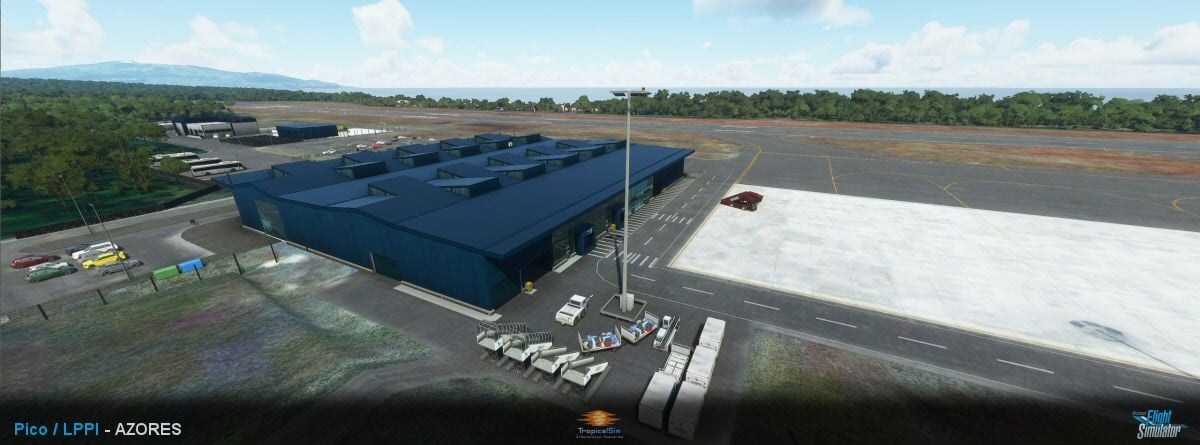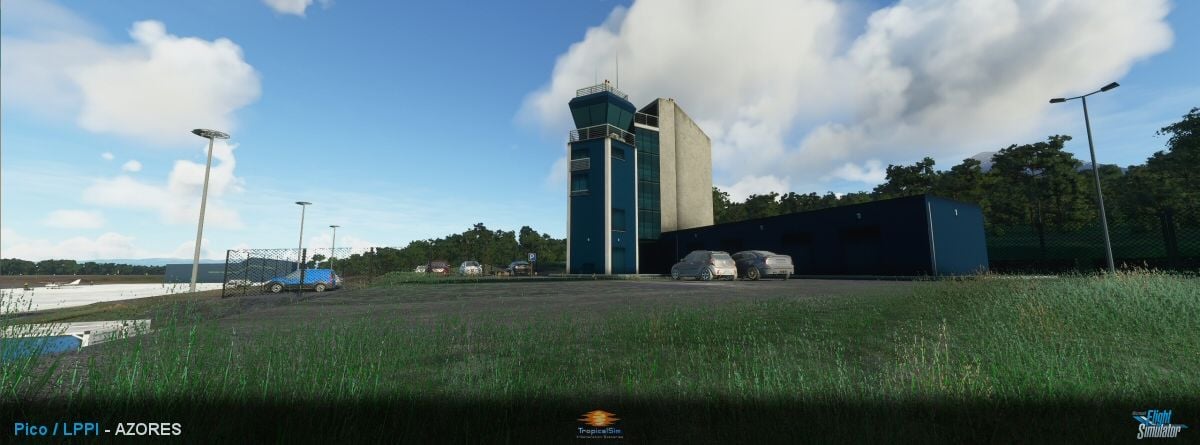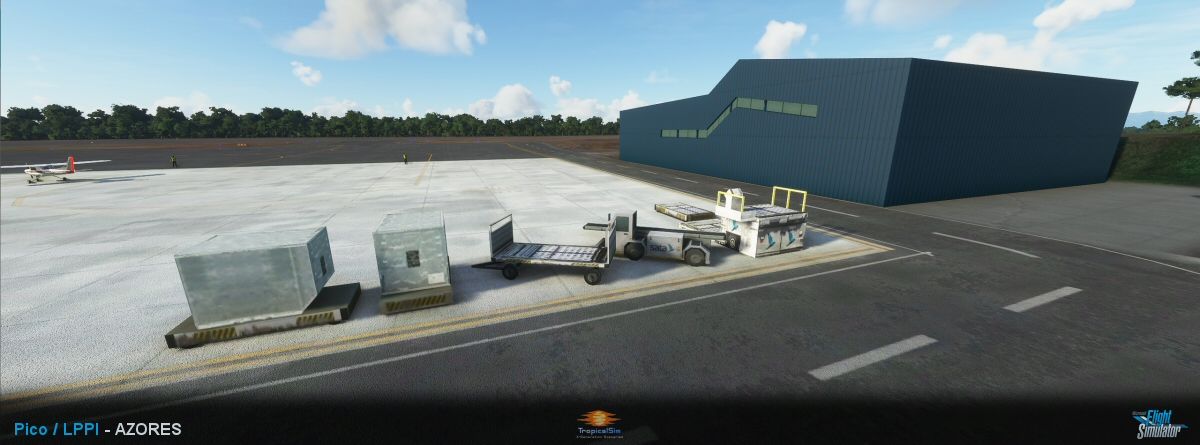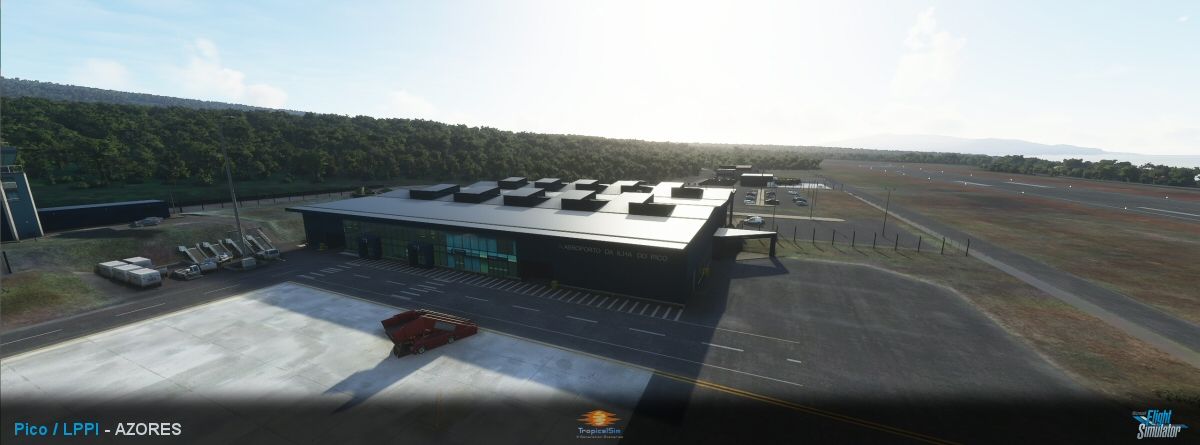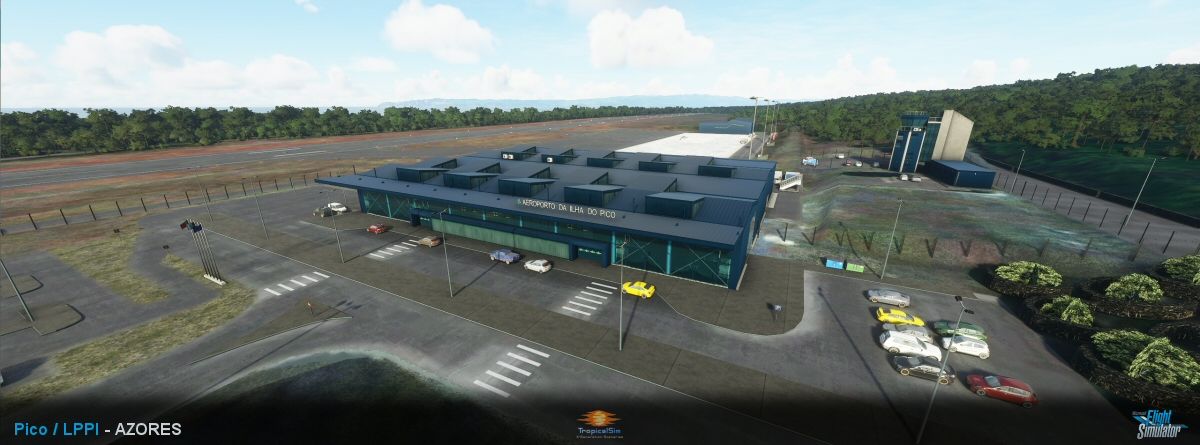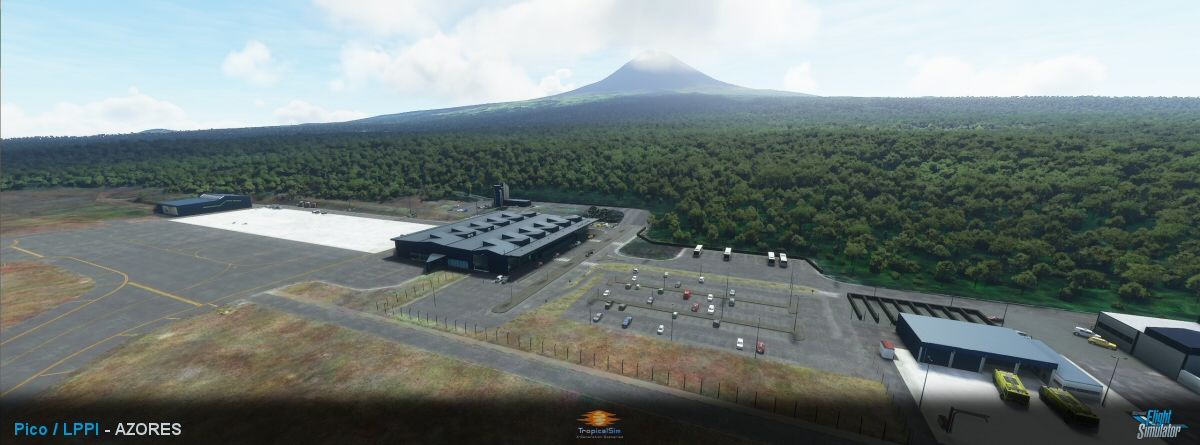Microsoft Flight Simulator | LPPI: Pico Airport
Buy Now
Microsoft Flight Simulator 2020 TropicalSim-2 LPPI: Pico Airport can be purchased directly from the vendor by clicking the button below.
The Archipelago of the Azores is composed of nine volcanic islands situated in the middle of the North Atlantic Ocean. The Portuguese archipelago is located about 1,500 km (930 mi) west from Lisbon and about 3,900 km (2,400 mi) east from the east coast of North America. The archipelago, and economic exclusion zone, forms the Autonomous Region of the Azores, one of the two autonomous regions of Portugal. Its main industries are: agriculture, dairy farming (for cheese and butter products primarily), minor livestock ranching, fishing and tourism, which is becoming the major service activity in the region.
There are nine major Azorean islands and an islet cluster, in three main groups. These are Flores and Corvo, to the west; Graciosa, Terceira, São Jorge, Pico and Faial in the centre; and São Miguel, Santa Maria and the Formigas Reef to the east. These extend for more than 600 km (370 mi) and lie in a northwest-southeast direction. The vast extent of the islands defines an immense exclusive economic zone of 1,100,000 km2 (420,000 sq mi). The westernmost point of this area is 3,380 km (2,100 mi) from the North American continent. All of the islands have volcanic origins, although some, such as Santa Maria, have had no historical activity since the islands were settled. Mount Pico, on the island of Pico, is the highest point in Portugal, at 2,351 m (7,713 ft) in altitude. The Azores are actually the peaks of several of the tallest mountains on the planet, as measured from their base at the bottom of the ocean, breaking the surface of the Atlantic.
These 9 islands have naturally evolved into three recognizable groups located within the Azores Platform; they are:
The Eastern Group (Grupo Oriental) of São Miguel, Santa Maria and Formigas Islets
The Central Group (Grupo Central) of Terceira, Graciosa, São Jorge, Pico and Faial
The Western Group (Grupo Ocidental) of Flores and Corvo.
Pico Island (Ilha do Pico, in Portuguese), is an island in the Central Group of the Portuguese Azores noted for its eponymous volcano, Ponta do Pico, which is the highest mountain in Portugal, the Azores, and the highest elevation of the Mid-Atlantic Ridge. In the tradition of the Portuguese poet, Raul Brandão, Pico is referred to as the Ilha Preta ("Black Island"), for its black volcanic earth, responsible for its UNESCO-designated historical vineyards that allowed the development of the island.
The island is 17.5 km south of São Jorge and just 7 km east of Faial, in the Cental Group of islands, an area that is colloquially known as o Triangulo (The Triangle). Pico is 46 kilometers long, and at its maximum extent about 16 kilometers wide, rising from its center to the west in the summit of the stratovolcano of Pico; making it the second largest of the Azores islands. Along the central plain of volcano cones to the eastern coast the landscape is pitted with the remnants of craters and lake-filled cones, and dominated by the ancient volcano of Topo.
Features:
- Highly detailed Pico Airport / LPPI
- Full night illumination
- Native MSFS Dynamic Lighting
- Seamless integration with default MSFS scenery
- Usage of MSFS SDK FlightSim Materials
- Usage of MSFS SDK native gITF models
MSFS LPPI
LPPI Pico Airport Map
Pico Airport Plane Spotting
Below are a range of videos showing previous plane spotting visits to Pico Airport
Related Searches
MSFS LPPI Pico Airport is available to purchase and download from the link(s) provided further up this page...
There are a wide range of MSFS community sites that provide reviews and feedback about the many MSFS....
MSFS LPPI Pico Airport is available to purchase and download from the link(s) shown near the top of this....
Many creators provide documentation for the addons they produce. Visit the developer page for this.....


